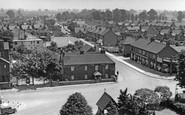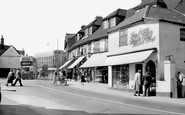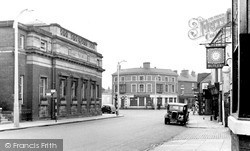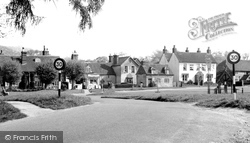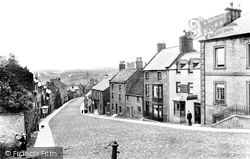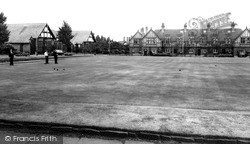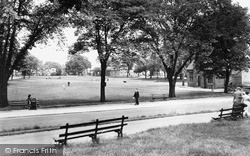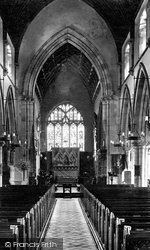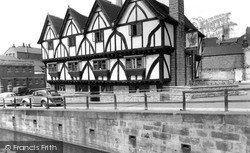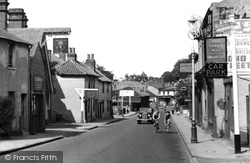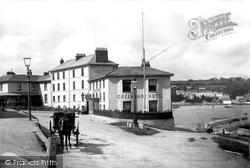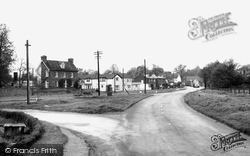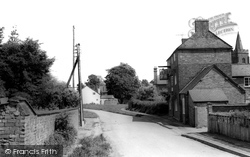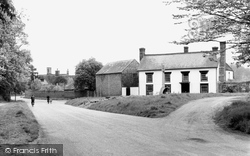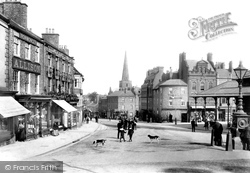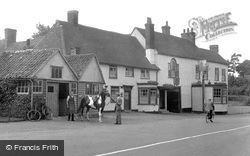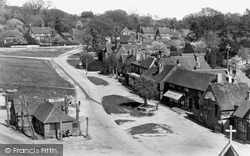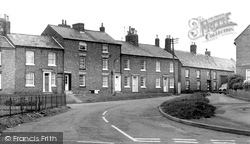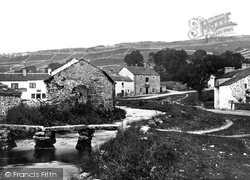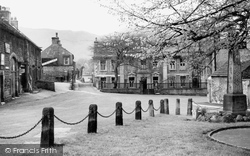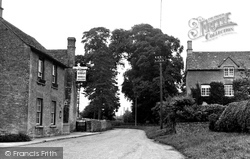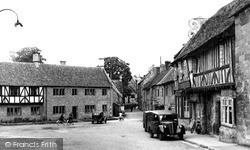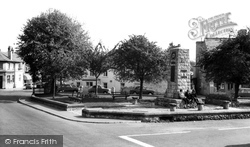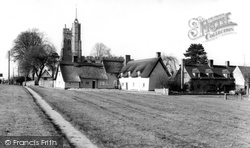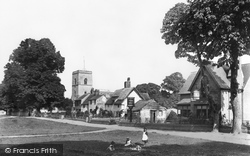Places
8 places found.
Those places high-lighted have photos. All locations may have maps, books and memories.
Photos
4 photos found. Showing results 161 to 4.
Maps
53 maps found.
Books
Sorry, no books were found that related to your search.
Memories
792 memories found. Showing results 81 to 90.
My Great Granny Barker
At the far end of photo number H183005a - on the right - is a white wall. Mr and Mrs Barker lived in a one room plus a tiny kitchen downstairs, two tiny rooms up, from the 1930s until my great-grandmother died in the 1950s ...Read more
A memory of Heighington in 1944 by
School
I lived and went to school in Ogbourne St Andrew, I think the headmistress was a Miss Platt and very authoritarian. I always remember school dinners because we were not allowed to leave anything it all had to be eaten. Fried tomato ...Read more
A memory of Ogbourne St Andrew in 1966 by
Ashby Aint Like It Used To Be
I was born and bred in Ashby-de-la-Zouch, the eldest of three children. My memories of Ashby itself are snapshots from a time which now seems so old-fashioned that it as nostalgic as a Herriot novel. As a young ...Read more
A memory of Ashby-de-la-Zouch in 1970
The Dumps
My mum and dad owned the Lonsdale off-licence during the 1960s and 1970s. I went to Brampton Manor, a few teachers stick in my memory but Dr Groom has to be the world's best physics teacher. I remember bunking off, walking over the dumps ...Read more
A memory of East Ham by
Blacksmith's Yard
My paternal grandmother Annie Cowell came from Stanford and I have always been led to believe that the space on the left of the house in the foreground, where the trees are, was the site of her father's blacksmith's ...Read more
A memory of Stanford-le-Hope in 1940 by
1939 Onwards I Remember
I was born in 1939, the year war started, and remember being lifted out of bed in the middle of the night and the barrage balloons looked like big elephants in the sky. I also remember the table shelter in the lounge which I ...Read more
A memory of Harborne in 1940 by
My Dads Shop
I always remember my dad's tuck shop in Idle, we were the end cottage on Albion Road next to the school. I was only 5 years old when we moved away but it's funny how memories, even at such a young age, stay with you. I remember walking what ...Read more
A memory of Idle in 1963 by
Happy Days
I lived in Hornchurch 1946-58. Went to school at North Street Primary and then for a brief time to Dury Falls before we moved in 1958. My father ran Cramphorns Corn and Seed Merchants, which can just be seen in this photo. My best ...Read more
A memory of Hornchurch in 1950 by
Molly Keeler
Myself and my 2 sisters and my brother lived in cottages at Hall Road near Aldborough Hall. We all use to walk all the way to Aldborough School in all weathers. My brother's name was Alan and my sisters' names were Ann and ...Read more
A memory of Aldborough in 1930 by
My First School Alby Hill 1944
My mother and her mother were born in my great-grandparents' cottage at Hanworth Common. Richard and Blanche Craske they were. Well dear old Richard was really my step great grandad. The true one was Charles ...Read more
A memory of Aldborough in 1944 by
Captions
357 captions found. Showing results 193 to 216.
The White Lion Inn Unfortunately, construction of Stafford's new road system was accompanied by another act of civic vandalism.
This view, taken from the start of Tanner's Hill, looks north-east across the green and past the parish pump in its tiled pumphouse to the Royal Oak pub and a fine range of historic houses and cottages
From 1877, once the barracks had been built in Gallowgate, the cobbles of Frenchgate would have echoed to the sound of marching soldiers.
Bolton Road was the first paved road laid in Port Sunlight, and W H Lever named it after his home town as a reminder of his roots.
Still a very pleasant open area near the church, the Green was once much bigger.
The loftiness results from Scott's restoration. His are the Victorian pews, but side galleries had been removed in 1921.
The Green Dragon pub is a heavily restored fourteenth-century timber-framed building with a stone ground floor and two jettied or projecting upper storeys.
On the extreme right, the Green Man pub sign advertises its car park facilities, with Dunfold's bakery and Hodges the draper's and outfitter's shop just beyond.
The Green Bank Hotel, on the south bank of the Penryn River, was built in 1785 to cash in on the trade brought to the town by the mail packets.
Until the early years of the 20th century, a thriving brewery, which was run by the Brown family, stood on the green.
The camera looks north towards the large green; on its right is the three- storey early 19th- century red brick Royal Oak pub.
Flendyshe House, facing the small green, is an early 17th-century house remodelled in 1807. On the green is the war memorial.
Tubwell Row bounds the Market Place along with High Row, St Cuthbert's Churchyard and Horsemarket. On the left are the flower-bedecked premises of the seed merchants and nurserymen Kent & Brydon.
The Green Man, at Mulberry Green, may well be Harlow's oldest pub. It dates from the 16th century.
This must be one of the most attractive villages in Surrey, with its large, sloping triangular green surrounded by good houses.
The camera looks north towards the large green; on its right is the three- storey early 19th- century red brick Royal Oak pub.
Like Geddington, the village of Hardingstone is famous for its Queen Eleanor Cross, erected by Edward I in memory of his wife. The funeral procession rested here en route to London in 1290.
The limestone cliffs, crags and scars make the setting for Malham a delight for urban eyes. The beck that flows over the cliff separates the village into western and eastern sections.
The village war memorial (right), on the green in Castleton's Market Place, takes the form of a Celtic cross.
Very much a village pub, the Swan has a beer garden at the back to cater for the local populace, who number around 500, and visitors who come this way to walk round this quiet spot.
The Green continues south from the market place. The half-timbered house on the right dates from Tudor times.
The early 1960s witnessed a significant increase in traffic through the area, in part due to the further increase in car ownership and commuting.
These cottages on the green, against the backdrop of the church, are probably the most photographed houses in Suffolk.
This remarkable village has three medieval stone houses, as well as the Norman church whose tower we see in this view.
Places (8)
Photos (4)
Memories (792)
Books (0)
Maps (53)



